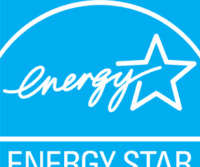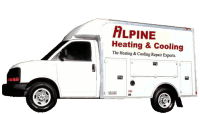
You know the holidays are coming to Skagit Valley when the winter birds start to arrive! Time to grab those bird-watching binoculars and dig those holiday decorations out of the garage. It’s time to brighten up Skagit Valley and your home for the season.
Check out these electrical safety tips to help you avoid common electrical hazards and fires that could be sparked by holiday decorations.
LED Lights
LED lights generate less heat and last up to 20 times longer than traditional incandescent lights. Not only are they safer, but they’re far more efficient. You will pay more upfront for those LED holiday lights, but it will be worth it!
Don’t Overload
Never connect more than three strands of incandescent lights per extension cord because they could blow a fuse and increase the risk of an electrical hazard or fire. Read the manufacturer’s instructions to become familiar with how many strands are safe for LED holiday lights.
Inspect Bulbs, Plugs and Wiring
Remember to inspect decorations that have been in storage and dispose of any that have cracked or frayed wiring since these can cause electrical shocks, burns or fires. If you need to replace bulbs or fuses for your electrical decorations, be sure to unplug them first.
Use Rechargeable Battery-Operated Candles
Decorate with battery-operated candles instead of traditional wax candles, as they provide the same effect as a burning candle, but are much less dangerous. Go with rechargeable batteries to save you money in the long-run.
Beware of Flammable Objects
That cool tapestry may look really good over your lamp shade, but it’s not a good idea. Never drape anything over a lightbulb or lamp shade.
No Trips to Urgent Care!
The amount of lifting, carrying, reaching, hanging and hauling that we do when decorating may exceed what we do at other times of the year. Be mindful when lifting heavy objects or reaching to place decorations. Take frequent breaks and gently stretch hard-working muscles. Get those teenagers invovled!
Ensure Your Ladder is Stable and Secure
When hanging lights outdoors, use a wooden or fiberglass ladder instead of a metal one.
Turn Off Lights Before Bed
Before going to bed or leaving your home, remember to turn off all indoor and outdoor holiday lighting.
We hope you have a wonderful holiday season in Skagit Valley! Be sure to check out your local holiday events such as the Lighted Boat Parade in La Conner!

 As much as half of the energy used in your home goes to heating and cooling. So making smart decisions about your home’s heating, ventilating, and air conditioning (HVAC) system can have a big effect on your utility bills — and your comfort. Take these steps to increase the efficiency of your heating and cooling system.
As much as half of the energy used in your home goes to heating and cooling. So making smart decisions about your home’s heating, ventilating, and air conditioning (HVAC) system can have a big effect on your utility bills — and your comfort. Take these steps to increase the efficiency of your heating and cooling system.
Change your air filter regularly
Check your filter every month, especially during heavy use months (winter and summer). If the filter looks dirty after a month, change it. At a minimum, change the filter every 3 months. A dirty filter will slow down air flow and make the system work harder to keep you warm or cool — wasting energy. A clean filter will also prevent dust and dirt from building up in the system — leading to expensive maintenance and/or early system failure.
Tune up your HVAC equipment yearly
Just as a tune-up for your car can improve your gas mileage, a yearly tune-up of your heating and cooling system can improve efficiency and comfort.
Install a programmable thermostat
A programmable thermostat is ideal for people who are away from home during set periods of time throughout the week. Through proper use of pre-programmed settings, a programmable thermostat can save you about $180 every year in energy costs.
Seal your heating and cooling ducts
Ducts that move air to-and-from a forced air furnace, central air conditioner, or heat pump are often big energy wasters. Sealing and insulating ducts can improve the efficiency of your heating and cooling system by as much as 20 percent — and sometimes much more.
Focus first on sealing ducts that run through the attic, crawlspace, unheated basement, or garage. Use duct sealant (mastic) or metal-backed (foil) tape to seal the seams and connections of ducts. After sealing the ducts in those spaces, wrap them in insulation to keep them from getting hot in the summer or cold in the winter. Next, look to seal any other ducts that you can access in the heated or cooled part of the house.
Consider installing ENERGY STAR qualified heating and cooling equipment
If your HVAC equipment is more than 10 years old or not keeping your house comfortable, have it evaluated by a professional HVAC contractor. If it is not performing efficiently or needs upgrading, consider replacing it with a unit that has earned the ENERGY STAR. Depending on where you live, replacing your old heating and cooling equipment with ENERGY STAR qualified equipment can cut your annual energy bill by more than $115. But before you invest in a new HVAC system, make sure that you have addressed the big air leaks in your house and the duct system. Sometimes, these are the real sources of problems rather than your HVAC equipment.
Contact Alpine Heat to ask about Proper Installation of your new equipment
Replacing your old heating and cooling equipment with new, energy-efficient models is a great start. But to make sure that you get the best performance, the new equipment must be properly installed. In fact, improper installation can reduce system efficiency by up to 30 percent – costing you more on your utility bills and possibly shortening the equipment’s life.

Do you have 15 minutes and a coil brush, shop vac and a dust mask? Then let’s get to work and clean those coils! It’s easy to do and will save you money! Keeping those coils clean can also help your refrigerator run more efficient. When the coils are clogged with dirt and dust, they can’t efficiently release heat. The result is your compressor works harder and longer than it was designed to, using more energy and shortening the life of your fridge. So if your refrigerator runs, but is not cold enough, get those coils clean!
Cleaning of the coils is needed more often if you have pets that shed or if the area where the refrigerator is located is particularly dusty, such as a garage
Step 1: Disconnect the electrical power
Step 2: Remove the toe grill (some fridge’s have the coils on the back – if yours does, just pull out from wall.)
Step 3: Clean the condenser coils. Push a coil brush into the condenser coils under the refrigerator. The coil brush knocks the dust off of the condenser coils. Vacuum the area to pick up the dust.
Step 4: Reinstall the toe grill.
Now it’s time to go outside and enjoy the beautiful Skagit Valley!


